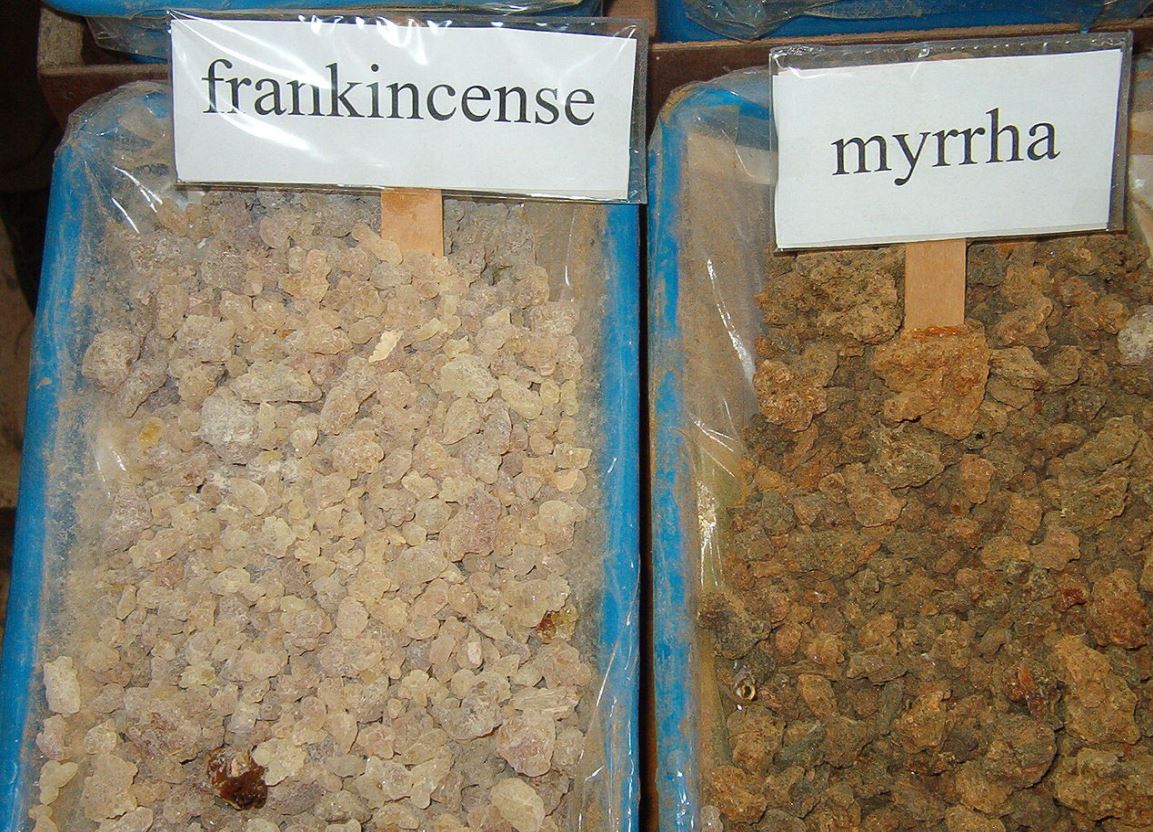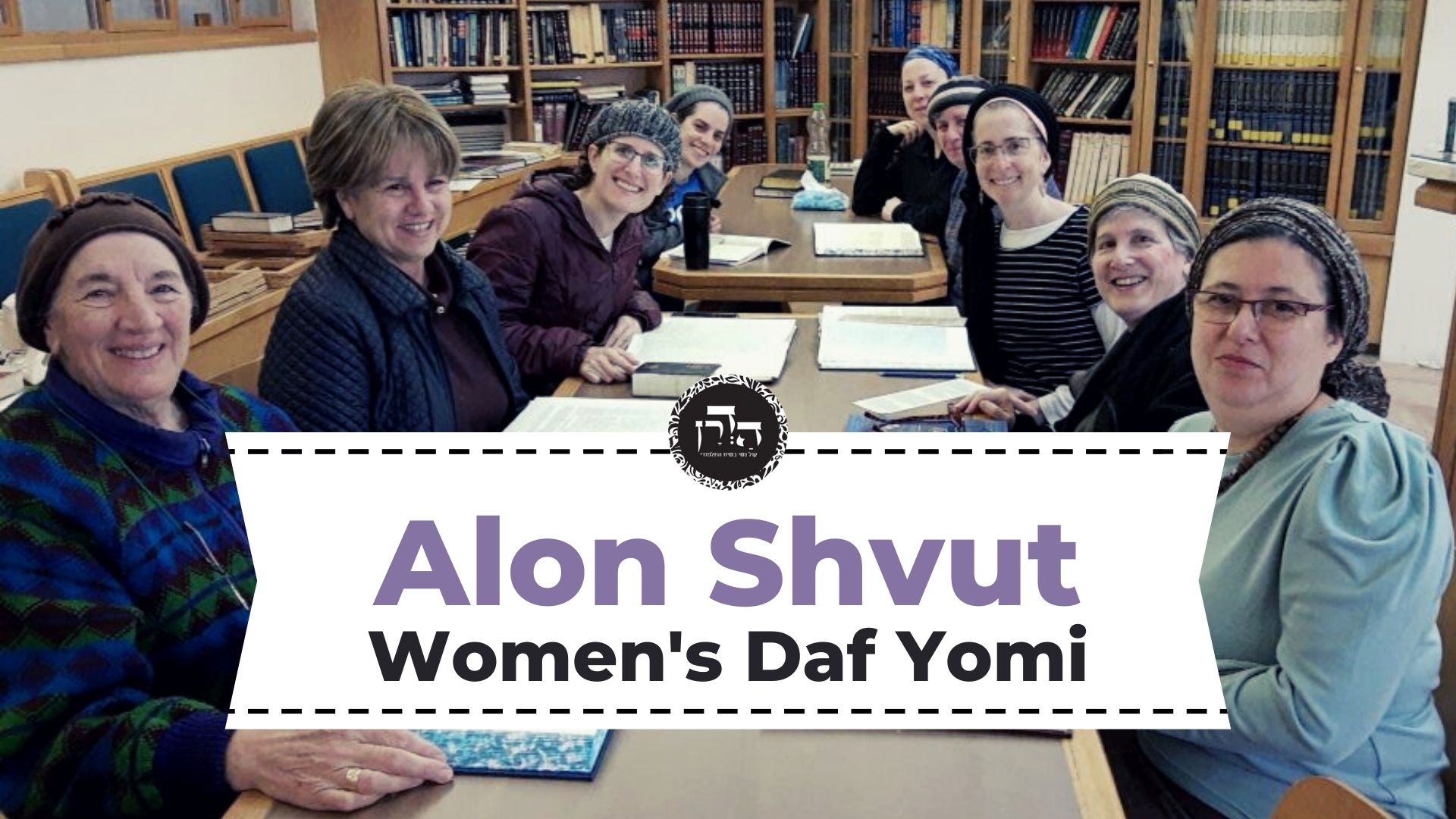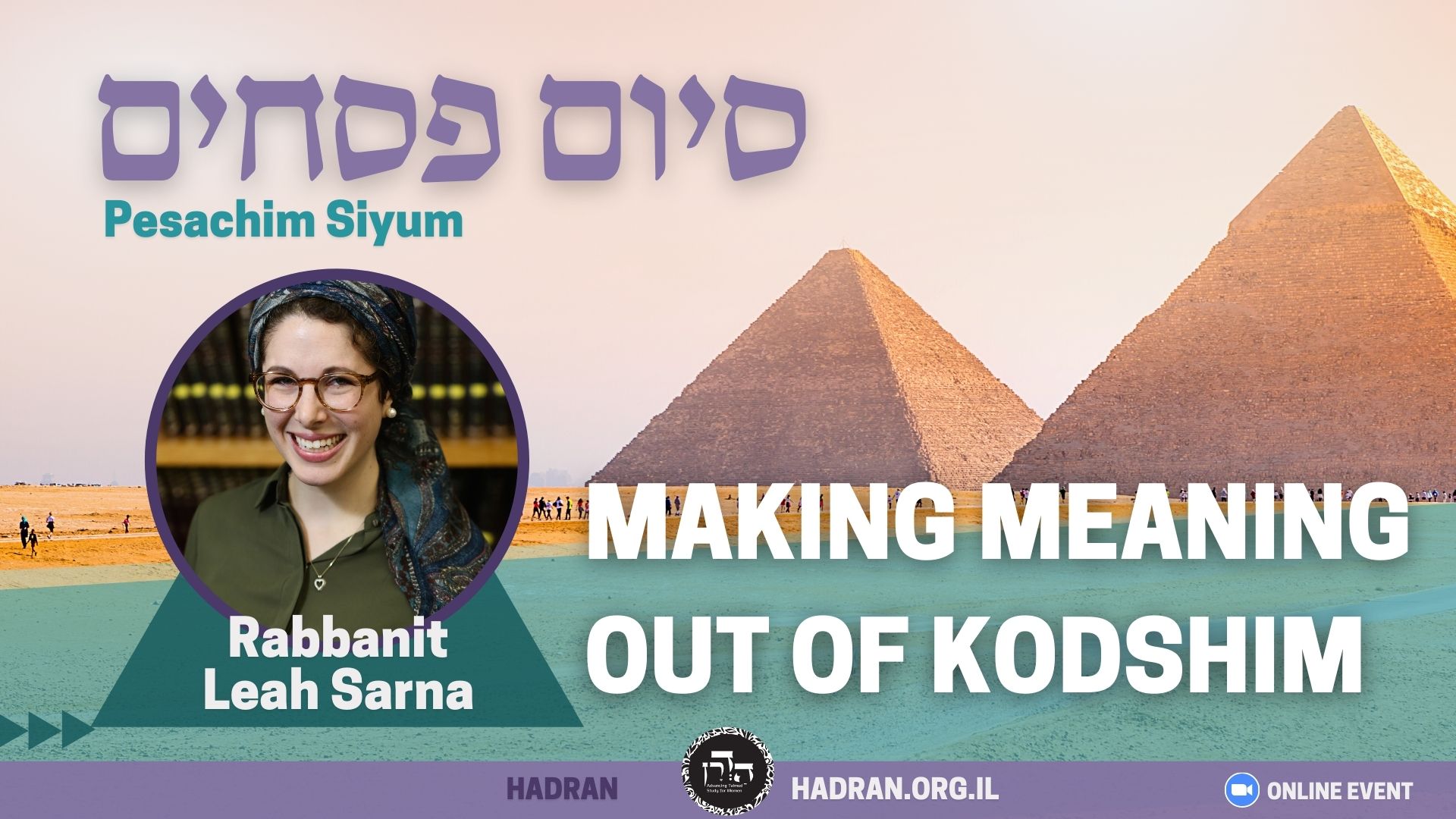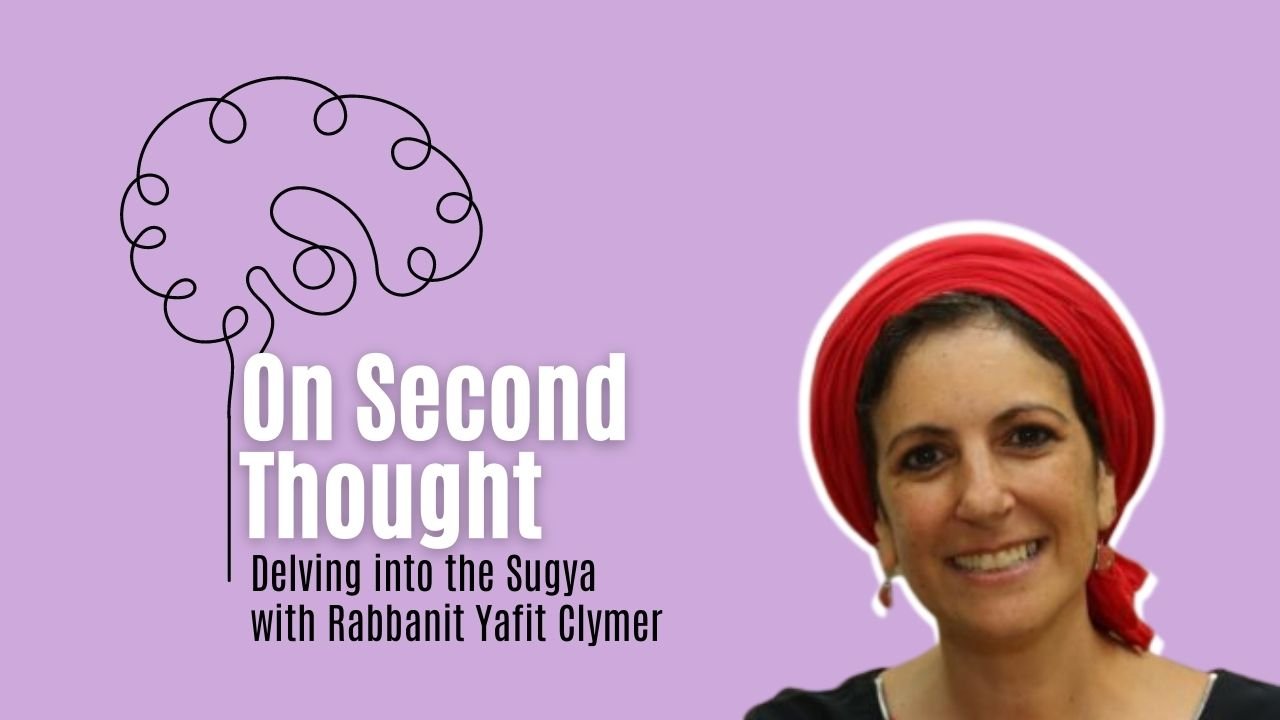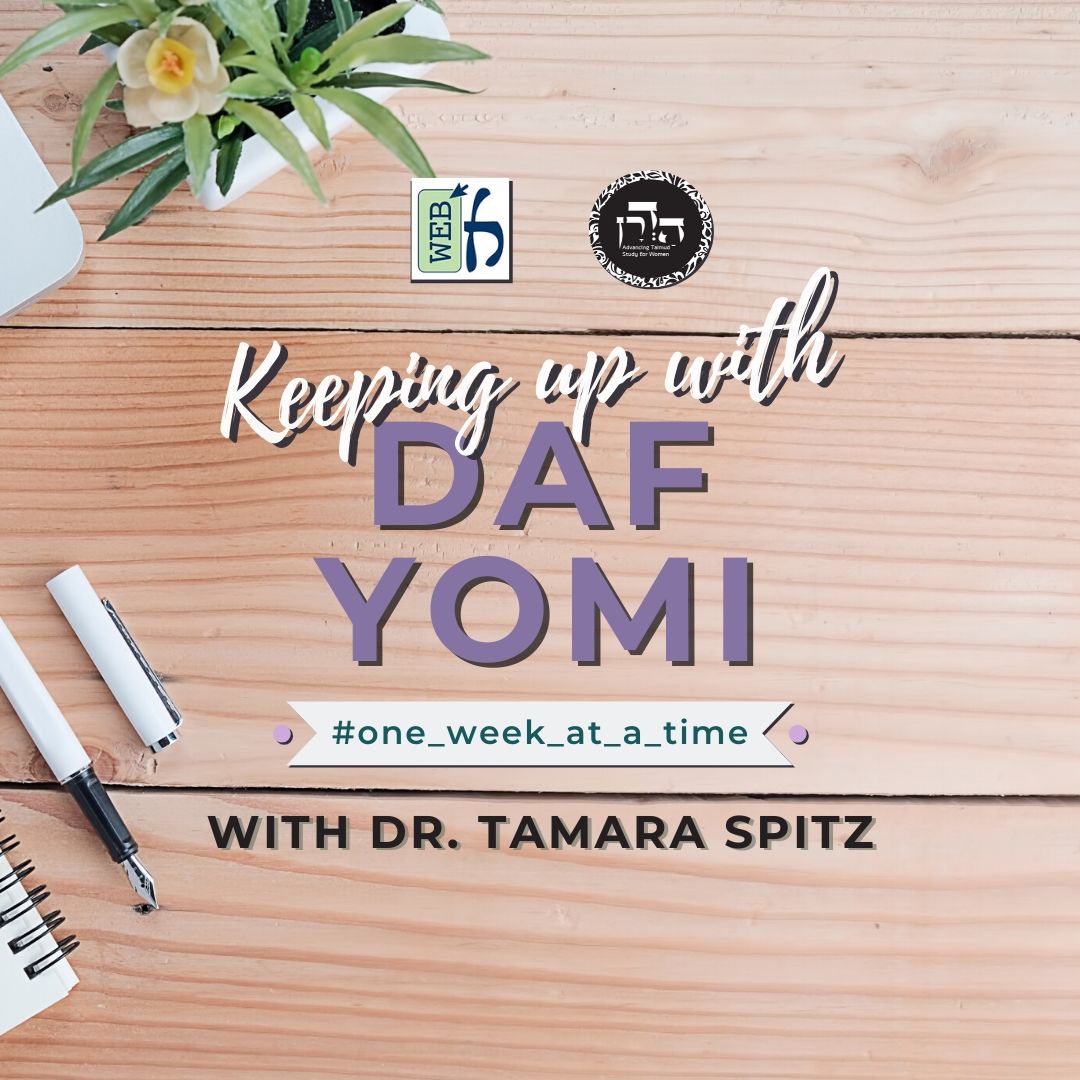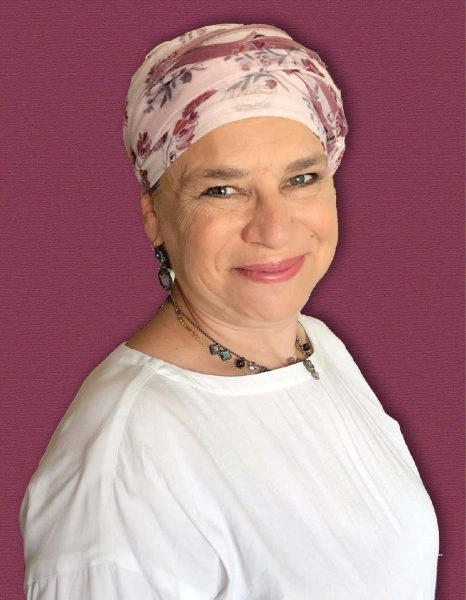Is it considered a firstborn if it is only a firstborn from a particular aspect? One who purchases an animal from a non-Jew and doesn’t know if the animal has given birth yet, how does one treat its offspring? According to Rabbi Yishmael who says that past a certain age, it is treated as a firstborn out of doubt, wouldn’t we just follow the majority as most animals give birth within their first year of being able to conceive? In order to answer this question, the gemara discusses the differences between a majority that is actually there vs. a statistical majority.
This month’s learning is dedicated in memory of Rabbi Dr. Raymond Harari z”l, on his 1st yahrzeit. As an educator, principal of Yeshiva of Flatbush, and community rabbi, he inspired thousands with his wisdom, warmth, and unwavering commitment to Torah.
Want to dedicate learning? Get started here:


Today’s daily daf tools:
This month’s learning is dedicated in memory of Rabbi Dr. Raymond Harari z”l, on his 1st yahrzeit. As an educator, principal of Yeshiva of Flatbush, and community rabbi, he inspired thousands with his wisdom, warmth, and unwavering commitment to Torah.
Today’s daily daf tools:
Delve Deeper
Broaden your understanding of the topics on this daf with classes and podcasts from top women Talmud scholars.
New to Talmud?
Check out our resources designed to help you navigate a page of Talmud – and study at the pace, level and style that fits you.
The Hadran Women’s Tapestry
Meet the diverse women learning Gemara at Hadran and hear their stories.
Bekhorot 19
דְּהָךְ דְּלָא בִּיכְּרָה שְׁבִיחַ טְפֵי צְרִיכָא.
that this offspring born to the ewe that had not previously given birth is superior. The Gemara concludes: Consequently, it was necessary to teach each case.
מַתְנִי׳ יוֹצֵא דּוֹפֶן וְהַבָּא אַחֲרָיו, רַבִּי טַרְפוֹן אוֹמֵר: שְׁנֵיהֶם יִרְעוּ עַד שֶׁיִּסְתָּאֲבוּ, וְיֵאָכְלוּ בְּמוּמָן לַבְּעָלִים. רַבִּי עֲקִיבָא אוֹמֵר: שְׁנֵיהֶן אֵינָן בְּכוֹר, הָרִאשׁוֹן — מִפְּנֵי שֶׁאֵינוֹ ״פֶּטֶר רֶחֶם״, וְהַשֵּׁנִי — מִפְּנֵי שֶׁקְּדָמוֹ אַחֵר.
MISHNA: With regard to an animal born by caesarean section and the offspring that follows it, since there is uncertainty whether each is a firstborn, neither is given to the priest. Rabbi Tarfon says: Both of them must graze until they become unfit, and they may be eaten in their blemished state by their owner. Rabbi Akiva says: Neither of them is firstborn; the first because it is not the one that opens the womb (see Exodus 13:12), as this animal did not itself open the womb, and the second because the other one preceded it.
גְּמָ׳ בְּמַאי קָמִיפַּלְגִי? רַבִּי טַרְפוֹן מְסַפְּקָא לֵיהּ: בְּכוֹר לְדָבָר אֶחָד, אִי הָוֵי בְּכוֹר אִי לָא הָוֵי בְּכוֹר, וְרַבִּי עֲקִיבָא פְּשִׁיטָא לֵיהּ: בְּכוֹר לְדָבָר אֶחָד לָא הָוֵי בְּכוֹר.
GEMARA: The Gemara asks: With regard to what do Rabbi Akiva and Rabbi Tarfon disagree? Rabbi Tarfon is uncertain with regard to an animal that is a firstborn in one aspect, e.g., first to be born or first to open the womb, whether it is considered a firstborn or whether it is not considered a firstborn. And conversely, it is obvious to Rabbi Akiva that an animal which is a firstborn in only one aspect is not considered a firstborn.
תָּנוּ רַבָּנַן: מִכְּלָל הַצָּרִיךְ לִפְרָט וּמִפְּרָט הַצָּרִיךְ לִכְלָל, כֵּיצַד? ״קַדֶּשׁ לִי כׇל בְּכוֹר״, יָכוֹל אֲפִילּוּ נְקֵבָה בַּמַּשְׁמָע? תַּלְמוּד לוֹמַר ״זָכָר״.
With regard to the definition of a firstborn, the Sages taught in a baraita: This halakha can be derived by means of the form of exegesis known as: From a generalization that requires a detail, and from a detail that requires a generalization. How so? The verse states: “Sanctify to Me all the firstborn, that which opens any womb among the children of Israel, both of man and of animal, it is Mine” (Exodus 13:2). Had the verse written only the generalization: “Sanctify to Me all the firstborn,” one might have thought that even a female animal is included in the category of a firstborn. Therefore, the verse states the detail: “Every firstborn male…you shall sanctify to the Lord” (Deuteronomy 15:19).
אִי ״זָכָר״, יָכוֹל אֲפִילּוּ יָצְתָה נְקֵבָה לְפָנָיו? תַּלְמוּד לוֹמַר: ״פֶּטֶר רֶחֶם״. אִי ״פֶּטֶר רֶחֶם״, יָכוֹל אֲפִילּוּ יָצָא אַחַר יוֹצֵא דּוֹפֶן? תַּלְמוּד לוֹמַר: ״בְּכוֹר״.
And had the verse stated only: “Every firstborn male,” one might have thought that the first male offspring of an animal has firstborn status, even in a case where a female emerged from the womb before it. Therefore, the verse states: “That which opens any womb,” to teach that only an animal that itself opens its mother’s womb can be a firstborn. And had the verse stated only: “That which opens any womb,” one might have thought that even an animal that emerged from the womb after its older sibling was born by caesarean section is considered firstborn. Therefore, the verse states: “All the firstborn,” to teach that only the first offspring can be considered a firstborn.
אֲמַר לֵיהּ רַב שֵׁרֵבְיָא לְאַבָּיֵי: רֵישָׁא לָא קָנָסֵיב לַהּ תַּלְמוּדָא ״בְּכוֹר״, אַלְמָא בְּכוֹר לְדָבָר אֶחָד הָוֵי בְּכוֹר. סֵיפָא קָנָסֵיב לַהּ תַּלְמוּדָא ״בְּכוֹר״, אַלְמָא בְּכוֹר לְדָבָר אֶחָד לָא הָוֵי בְּכוֹר!
The Gemara analyzes the baraita. Rav Sherevya said to Abaye: In the first clause, the baraita does not cite proof from the word “firstborn” that a male born after a female is not considered a firstborn. Apparently, an animal that is a firstborn in one aspect is called a firstborn, otherwise the baraita would not have had to derive the exclusion of a male born after a female from the phrase “that which opens any womb”; it could have cited the word “firstborn.” And in the last clause, the baraita does cite proof from the word “firstborn” that an animal whose older sibling was born by caesarean section is not considered a firstborn, despite the fact that it is a firstborn in one aspect. Apparently, a firstborn in one aspect is not called a firstborn. If so, the baraita is self-contradictory.
אֲמַר לֵיהּ: לְעוֹלָם בְּכוֹר לְדָבָר אֶחָד לָא הָוֵי בְּכוֹר, וְרֵישָׁא הָכִי קָאָמַר: אִי זָכָר, יָכוֹל אֲפִילּוּ יוֹצֵא דּוֹפֶן? תַּלְמוּד לוֹמַר ״פֶּטֶר רֶחֶם״.
Abaye said to Rav Sherevya: Actually, a firstborn in one aspect is not called a firstborn, and this is what the first clause is saying: Had the verse stated only: “Every firstborn male,” one might have thought that even an animal born by caesarean section is itself considered a firstborn. Therefore, the verse states: “That which opens any womb,” to teach that an animal must itself open the womb to be considered a firstborn. The word “firstborn” cannot be cited as proof that an animal born by caesarean section is not a firstborn, as such an animal was in fact born first. Therefore, the tanna cites the phrase “that which opens any womb.” Once this phrase is cited, then a male born after a female is excluded as well, despite the fact that this halakha could have been derived from the word “firstborn.”
רָבִינָא אָמַר: לְעוֹלָם בְּכוֹר לְדָבָר אֶחָד הָוֵי בְּכוֹר, וְסֵיפָא הָכִי קָאָמַר: אִי סָלְקָא דַעְתָּךְ יָצָא אַחֵר יוֹצֵא דּוֹפֶן קָדוֹשׁ, ״בְּכוֹר״ דִּכְתַב רַחֲמָנָא לְמָה לִי?
Ravina said that there is a different explanation: Actually, a firstborn in one aspect is called a firstborn, and the halakha is not derived from the meaning of the word “firstborn” itself, but from the fact that it is superfluous. And this is what the last clause is saying: If it enters your mind that an animal which emerged from the womb after its older sibling was born by caesarean section is sanctified, why do I need the word “firstborn” that the Merciful One wrote?
אִי לְמַעוֹטֵי הֵיכָא דְּיָצְתָה נְקֵבָה לְפָנָיו — מִ״פֶּטֶר רֶחֶם״ נָפְקָא! אֶלָּא שְׁמַע מִינַּהּ ״בְּכוֹר״ לְמַעוֹטֵי הֵיכָא דְּיוֹצֵא אַחַר יוֹצֵא דּוֹפֶן.
If it serves to exclude a case where a female emerged from the womb before it, that is derived from the phrase “that which opens any womb.” Rather, conclude from it that “firstborn” serves to exclude a case where an animal emerged from the womb after its older sibling was born by caesarean section. According to Ravina, the word “firstborn” is referring to an animal that is a firstborn even in only one aspect, but as it is extraneous it serves to exclude an animal whose older sibling was born by caesarean section.
אֲמַר לֵיהּ רַב אַחָא מִדִּפְתִּי לְרָבִינָא: אִי סָלְקָא דַעְתָּךְ בְּכוֹר לְדָבָר אֶחָד הָוֵי בְּכוֹר, תִּינַח הֵיכָא דְּיָצָא זָכָר יוֹצֵא דּוֹפֶן וְזָכָר דֶּרֶךְ רֶחֶם, דְּלָא קָדוֹשׁ, דְּאִימַּעוּט לֵידָה מִ״בְּכוֹר״, דִּבְכוֹר לִרְחָמִים אִיכָּא, בְּכוֹר לִזְכָרִים לֵיכָּא.
Rav Aḥa of Difti said to Ravina: If it enters your mind that a firstborn in one aspect is called a firstborn and the derivation is based on the fact that the term “firstborn” is superfluous, that works out well in a case where a male emerged by caesarean section and then another male emerged through the womb. It stands to reason that it is not sanctified, as this birth is excluded by the word “firstborn,” as it is the firstborn of the womb, but it is not the firstborn of the males.
אֶלָּא הֵיכָא דְּיָצְתָה נְקֵבָה דֶּרֶךְ דּוֹפֶן וְזָכָר דֶּרֶךְ רֶחֶם — לִיקְדַּשׁ, דְּהָא אִיכָּא בְּכוֹר לִזְכָרִים וּבְכוֹר לְרֶחֶם! אֶלָּא מְחַוַּורְתָּא כִּדְאַבָּיֵי.
But in a case where a female emerged by caesarean section and afterward a male was born through the womb, let it be sanctified, as it is the firstborn of the males and the firstborn of the womb. One cannot derive the exclusions of both of these cases from the word “firstborn,” and yet the baraita indicates that even if a female was born first by caesarean section, the male born afterward is not considered the firstborn. The Gemara concludes: Rather, it is clear that the baraita must be interpreted in accordance with the explanation of Abaye, that a firstborn in one aspect is not called a firstborn.
הֲדַרַן עֲלָךְ הַלּוֹקֵחַ עוּבַּר פָּרָתוֹ.
מַתְנִי׳ הַלּוֹקֵחַ בְּהֵמָה מִן הַגּוֹי, וְאֵינוֹ יוֹדֵעַ אִם בִּיכְּרָה אִם לֹא בִּיכְּרָה. רַבִּי יִשְׁמָעֵאל אוֹמֵר: עֵז בַּת שְׁנָתָהּ — וַדַּאי לַכֹּהֵן, מִכָּאן וְאֵילָךְ — סָפֵק. רָחֵל בַּת שְׁתַּיִם — וַדַּאי לַכֹּהֵן, מִכָּאן וְאֵילָךְ — סָפֵק. פָּרָה וַחֲמוֹר בְּנוֹת שָׁלֹשׁ — וַדַּאי לַכֹּהֵן, מִכָּאן וְאֵילָךְ — סָפֵק.
MISHNA: In the case of one who purchases a female animal from a gentile and does not know whether it had previously given birth or whether it had not previously given birth, and after the purchase the animal gave birth to a male, Rabbi Yishmael says: If the mother was a goat within its first year the male offspring certainly is given to the priest, as it definitely never gave birth previously. From that point forward, i.e., if the mother is older than that, its offspring’s status as a firstborn is uncertain. If it was a ewe within its second year the male offspring certainly is given to the priest; from that point forward an offspring’s status is uncertain. If it was a cow or a donkey within its third year the male offspring certainly is given to the priest; from that point forward the offspring’s status is uncertain.
אָמַר לוֹ רַבִּי עֲקִיבָא: אִילּוּ בְּוָולָד בִּלְבַד הַבְּהֵמָה נִפְטֶרֶת כִּדְבָרֶיךָ, אֶלָּא אָמְרוּ: סִימָן הַוָּולָד בִּבְהֵמָה דַּקָּה — טִינּוּף, וּבַגַּסָּה — שִׁילְיָא, וּבָאִשָּׁה — שָׁפִיר וְשִׁילְיָא.
Rabbi Akiva said to him: Were an animal exempted only by giving birth to an offspring and in no other manner the halakha would be in accordance with your statement. But the Sages said: An indication of the offspring in a small animal is a murky discharge from the womb, which indicates the animal had been pregnant, and therefore exempts subsequent births from the mitzva of the firstborn. The indication in a large animal is the emergence of an afterbirth, and the indication in a woman is a fetal sac or an afterbirth. Since these can be produced even within a year, it cannot be assumed that an animal in its first year is definitely subject to the mitzva of the firstborn.
זֶה הַכְּלָל: כֹּל שֶׁיָּדוּעַ שֶׁבִּיכְּרָה — אֵין כָּאן לַכֹּהֵן כְּלוּם, וְכֹל שֶׁלֹּא בִּיכְּרָה — הֲרֵי זֶה לַכֹּהֵן, וְאִם סָפֵק — יֵאָכֵל בְּמוּמוֹ לַבְּעָלִים.
Rabbi Akiva continues: Rather, this is the principle: In any case where it is known that the animal had previously given birth, the priest has nothing here. And in any case where it is known that the animal had not previously given birth, that is given to the priest. And if it is uncertain, it may be eaten in its blemished state by the owner.
גְּמָ׳ מִיכָּן וְאֵילָךְ, אַמַּאי סָפֵק? הַלֵּךְ אַחַר רוֹב בְּהֵמוֹת, וְרוֹב בְּהֵמוֹת מִתְעַבְּרוֹת וְיוֹלְדוֹת בְּתוֹךְ שְׁנָתָן נִינְהוּ, וְהָא וַדַּאי מֵילָד אוֹלֵיד! לֵימָא רַבִּי יִשְׁמָעֵאל כְּרַבִּי מֵאִיר סְבִירָא לֵיהּ, דְּחָיֵישׁ לְמִיעוּטָא?
GEMARA: The mishna teaches that according to Rabbi Yishmael, the firstborn status of the offspring of a goat acquired from a gentile when it was more than one year old is uncertain. The Gemara asks: From that point forward, i.e., if it was bought after its first year, why is it in a state of uncertainty? One should follow the majority of animals, and as the majority of animals are impregnated and give birth within their first year, it can be assumed this animal certainly gave birth. The Gemara suggests: Shall we say Rabbi Yishmael holds in accordance with the opinion of Rabbi Meir, who says one must be concerned for the minority, i.e., he must take the minority of cases into account?
אֲפִילּוּ תֵּימָא רַבָּנַן, כִּי אָזְלִי בָּתַר רוּבָּא בְּרוּבָּא דְּאִיתֵיהּ קַמַּן, כְּגוֹן תֵּשַׁע חֲנוּיוֹת וְסַנְהֶדְרִין, אֲבָל רוּבָּא דְּלֵיתֵיהּ קַמַּן — לָא אָזְלִי רַבָּנַן בָּתַר רוּבָּא.
The Gemara responds: You may even say Rabbi Yishmael holds in accordance with the opinion of the Rabbis. When the Rabbis follow the majority, this is in a case of an evident majority, which is extant and can be examined. For example, in a situation where a piece of meat is found in front of nine stores selling kosher meat and one store selling non-kosher meat, and it is not known from which store it came, it may be assumed that it came from one of the stores that sells kosher meat. And similarly, the Sanhedrin reaches its decisions by a majority vote of its judges. But with regard to a non-evident majority, which is based solely upon statistical information such as the assertion that most animals become pregnant and give birth within their first year, even the Rabbis do not follow the majority.
וְהָא קָטָן וּקְטַנָּה, דְּרוּבָּא דְּלֵיתֵיהּ קַמַּן, וְקָאָזְלִי רַבָּנַן בָּתַר רוּבָּא, דִּתְנַן: קָטָן וּקְטַנָּה לֹא חוֹלְצִין וְלֹא מְיַיבְּמִין, דִּבְרֵי רַבִּי מֵאִיר. אָמְרוּ לוֹ: יָפֶה אָמַרְתָּ שֶׁאֵין חוֹלְצִין, ״אִישׁ״ כָּתוּב בַּפָּרָשָׁה, וּמַקְּשִׁינַן אִשָּׁה לְאִישׁ.
The Gemara raises a difficulty: But the case of levirate marriage of a male minor or a female minor is dependent upon a non-evident majority, and yet the Rabbis follow the majority in their ruling. As we learned in a baraita: A male minor or a female minor may not perform the ritual through which a yavam frees a yevama of her levirate bonds [ḥalitza], nor enter into levirate marriage; this is the statement of Rabbi Meir. The Rabbis said to Rabbi Meir: You have aptly stated that they may not perform ḥalitza, since “man,” indicating an adult male, is written in the section of the Torah addressing ḥalitza (see Deuteronomy 25:7). Although an adult female is not mentioned explicitly, we juxtapose the halakha of the woman to that of the man and require that the female involved in ḥalitza must be an adult as well.
מָה טַעַם אֵין מְיַיבְּמִין? אָמַר לָהֶם: קָטָן — שֶׁמָּא יִמָּצֵא סָרִיס, קְטַנָּה — שֶׁמָּא תִּמָּצֵא אַיְילוֹנִית, וְנִמְצְאוּ פּוֹגְעִין בְּעֶרְוָה.
But what is the reason they may not enter into levirate marriage, with regard to which the Torah’s wording does not specifically indicate adults? Rabbi Meir said to them: In the case of a male minor I am concerned lest he is found to be a eunuch, i.e., one who is incapable of fathering children, when he grows up. Similarly, a female minor may not enter into levirate marriage lest when she grows up she is found to be a sexually underdeveloped woman [ailonit], who is incapable of bearing children. In either case the mitzva of levirate marriage does not apply, and they would be found to have encountered a forbidden relative and entered into a forbidden relationship where no mitzva applies, as the entire purpose of levirate marriage is to have children for the brother who died childless.
וְרַבָּנַן, זִיל בָּתַר רוּבָּא קְטַנִּים, וְרוֹב קְטַנִּים לָאו סָרִיסִים נִינְהוּ; זִיל בָּתַר קְטַנּוֹת, וְרוֹב קְטַנּוֹת לָאו אַיְילוֹנִית נִינְהוּ!
And the Rabbis hold: Follow the majority of male minors, and most male minors are not eunuchs; and likewise, follow the majority of female minors, and most female minors are not sexually underdeveloped women. This indicates that the Rabbis disagree with Rabbi Meir even with regard to a non-evident majority.
אֶלָּא אָמַר רָבָא:
Rather, Rava says:





